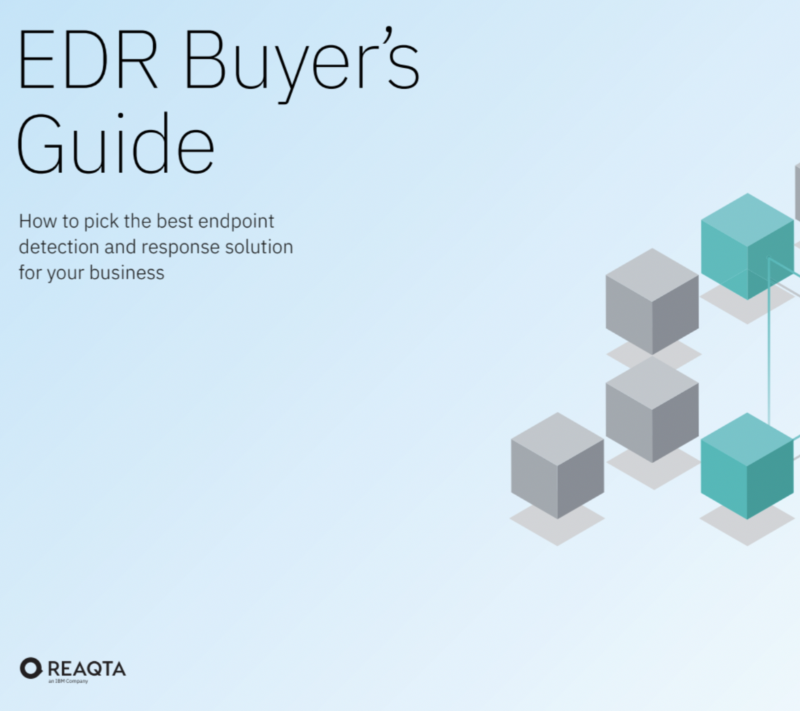EDR Buyer’s Guide
Published on 24 Oct 2022

In recent years, we've seen a surge in the proliferation and interconnectedness of endpoints and data, as well as an increase in malicious activity by threat actors. These variables have posed a significant danger to business continuity for both big and small enterprises. Cybercriminals and state-sponsored organizations are increasingly targeting enterprises.
Traditional protection approaches combat known threats but are susceptible to sophisticated and undiscovered attack strategies, and they do not give insight into assets, which is a major hurdle to safeguarding these systems. Endpoint security experts are often only accessible to the biggest or most well-funded enterprises. When combined with the reality that many assaults are now occurring at machine speed with multiple moving pieces, human teams depending on conventional endpoint security solutions are unable to stay up.
An endpoint detection and response (EDR) solution prevents and isolates malware while providing security professionals with the tools they need to deal with these threats effectively. A contemporary EDR may assure business continuity by successfully combating rapidly evolving, automated, and sophisticated threats like ransomware or fileless assaults without raising analyst workloads or needing highly qualified security personnel.
Automation and usability
With sophisticated threats and attack surfaces anticipated to increase in 2022 and beyond, many firms are struggling to keep up with hackers. A contemporary EDR should reduce the requirement for highly qualified security personnel by relieving a rising burden via clever automation.
The key to swiftly gaining value from an EDR for purchasers is to automate and simplify. Al automation delegated the majority of the labor to algorithms while reducing human engagement. The program becomes simpler to use as a result of such Al techniques, and teams may get up and running immediately without requiring prolonged enabling.
Response timings are important during an attack: the investigation time should be considerably under one minute to remove advanced threats before they do damage to your infrastructure.
Buyers should search for an EDR that is self-contained and has automated detection and response capabilities. This gives analysts a clear, real-time snapshot of an assault as it progresses and may provide guided remediation to help them swiftly return to normal.
Management of alerts
The major distinction between an EDR and standard antivirus (AV) solutions is that an AV depends on existing signatures for detection and must be aware of a threat in order to inhibit it. In contrast, an EDR employs a behavioral approach to detect malware and other possible risks based on how they act on an endpoint. In addition, unlike an antivirus, an EDR is lightweight and does not need regular updates.
To reduce the amount of alerts—and analyst workloads—to a low, the Al utilized in a contemporary EDR must be capable of rapid detection, excellent precision, and high fidelity. Buyers should educate themselves on the Al and machine learning methods used. In comparison to Al engines that depend on pretrained models and analysis for detection, an EDR that employs an initial learning model to define the usual behavior of each endpoint offers improved accuracy in detections and alerts when deviations from the normal occur.
A contemporary EDR should be equipped with a powerful, Al-driven alert management system capable of learning from the analyst and then autonomously implementing analyst decision-making in day-to-day alert handling to improve reaction time and relieve alert fatigue for analysts. Deploying a completely automated, Al-driven alert management solution is critical for combating alert fatigue, lowering staff attrition, and regaining control.
Threat detection
Threat hunting is a key component of a contemporary EDR system and is required to keep the environment clean and free of threats. Threat hunting can swiftly detect new threats and discover weak points in an ecosystem. Data mining enables you to detect and eradicate latent risks that would otherwise go unreported but might exist in an environment for months or even years, waiting to be exploited by an attacker.
In-memory and fileless attacks are difficult to trace by nature, and they become considerably more difficult to track when attackers use multiple variations as they traverse across a big infrastructure. A contemporary EDR should automate the hunting process and employ data mining to allow security teams to automatically search for risks that have behavioral and functional similarities with past events, giving findings in seconds.
It is critical to be adaptable while looking for threats. Buyers should seek for an EDR that not only provides a big library of prebuilt detection playbooks that can be implemented right away, but also bespoke playbooks that can be readily generated for particular circumstances unique to an organization's security requirements without needing scripting experience.
Finding a needle in a haystack is a common analogy for threat hunting. EDR searches must be able to give complete and granular results in real time by drilling down to particular hunting criteria and combining such parameters in an inclusive or exclusive way. To help analysts even more and free up their time, results should be shown in an easy-to-use graphical user interface (GUI) so that analysts can simply and intuitively search for any event, from any endpoint, at any time.
Download IBM's whitepaper to learn more about Introducing EDR Buyer’s Guide Whitepaper only on Whitepapers Online.
